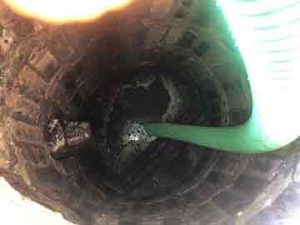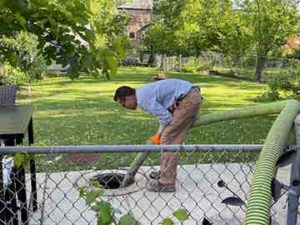A catch basin is a drain that collects rainwater from your yard or the street and channels it into the city’s stormwater management systems. It is a concrete-lined pit with a metal grate at the top. The basin can have a circular, rectangular, or square opening. Inside the catch basin receptacle, there are two openings: an inlet and an outlet.
Catch basins are often present on streets, parking lots, and private properties. Catch basins may be part of a home’s plumbing system. Catch basins that belong to the city may also be on your property. Both private-owned and public-owned catch basins serve the same purpose.
Catch basins may also carry wastewater from the kitchen sink and laundry. All catch basins should trap debris and keep them from flowing into the city’s drainage system. As a result, catch basins often become clogged or damaged.
Common issues you may find with the catch basins in your property are:
- Clogs resulting from sedimentation, grease buildup, and debris. Grease from the kitchen and laundry, sediment in the water, and litter from the street or yard can collect inside the basin and block it.
- Foul odors from the catch basin. The materials trapped inside the catch basin may decay and start emitting foul odors. That is an enormous problem if the catch basin is close to your home. Many Chicago homes have catch basins in the backyard and struggle with this issue.
- Plants’ roots may overgrow the catch basin. It prevents water from reaching the catch basin and could eventually damage it.
To prevent these issues, clean the catch basin at least twice a year.
Who is responsible for cleaning a catch basin?
Catch basins located on private property are the property owner’s responsibility, says Onsite Property Management Services, even if the catch basin belongs to the city. You are responsible for cleaning your privately owned catch basin and the city’s catch basin if it is within your property limits. Failing to do this can leave you open to legal liabilities.
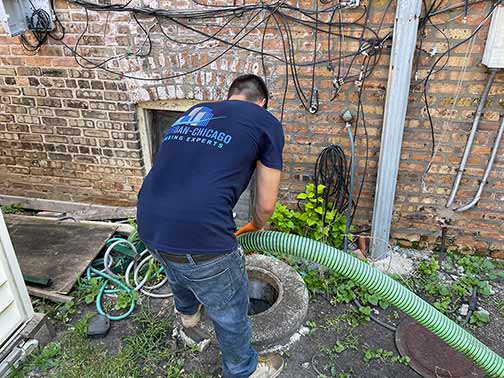
Enlisting the help of a professional is recommended if you have a problem with foul odors coming from the catch basin.
Why it is vital to clean catch basin
Keeping the catch basin clean is a service to yourself, your family, your property, and the entire community. Regular cleaning of the catch basin helps to preserve your wealth and health. Here are some benefits of cleaning a catch basin regularly:
Prevent flooding
You protect your home from possible flooding. If a catch basin is clogged, the water that should go into it will find another place to go. The closest place for that water to go is usually your basement or crawl space. A clogged catch basin can cost you tens of thousands of dollars worth of property damage.
Protect the road and your home’s value
Water will flood the street if it cannot flow into the catch basin. Stagnant water on the surfaces of the tarred streets is one of the top causes of damage to public roads. A damaged roadside will diminish the curb appeal of your property and hurt the value of homes in the neighborhood.
Preserve your family’s health
The water that goes into a catch basin carries all kinds of harmful chemicals. As long as those chemicals flow underground in the drainage system, they are harmless. But once they are allowed to collect on street surfaces and lawns, they pose a threat to humans and pets. Stagnant water also provides a breeding ground for mosquitoes and other pests.
Avoid hazards on the road
Melted snow that fails to flow into a catch basin will remain on the street and constitute a hazard to pedestrians and motorists. There is a high risk of car accidents, slips, or falls following stagnant water on the road.
Prevent foul odors inside your home
Cleaning the catch basin in your backyard or anywhere on your property will prevent foul odors from building up and finding their way into the home. An unpleasant smell from a catch basin is a sign of heavy bacterial growth. That also poses a threat to your family’s health.
How to clean a catch basin
Depending on how dirty your catch basin is, cleaning it can be moderately hard or very tough. The process involves the following steps:
- Removing the debris on top of the grate or around it.
- Extracting all visible trash from the hole with a rake, pitchfork, or gloved hand.
- And lastly, remove the sediment at the bottom of the pit with a shovel.
An easier way to do this is to hire a company specializing in catch basin cleaning. Their vacuum pumping trucks will clean the basin thoroughly in a few minutes. Enlisting the help of a professional is recommended if you have a problem with foul odors coming from the catch basin.
—
Are you in need of catch basin cleaning services in the Greater Chicago area? We can help! Contact us below:
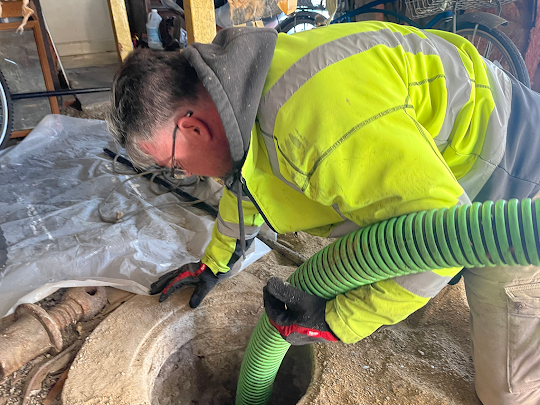
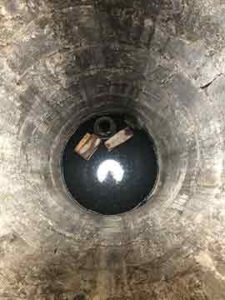 Importance of catch basins
Importance of catch basins